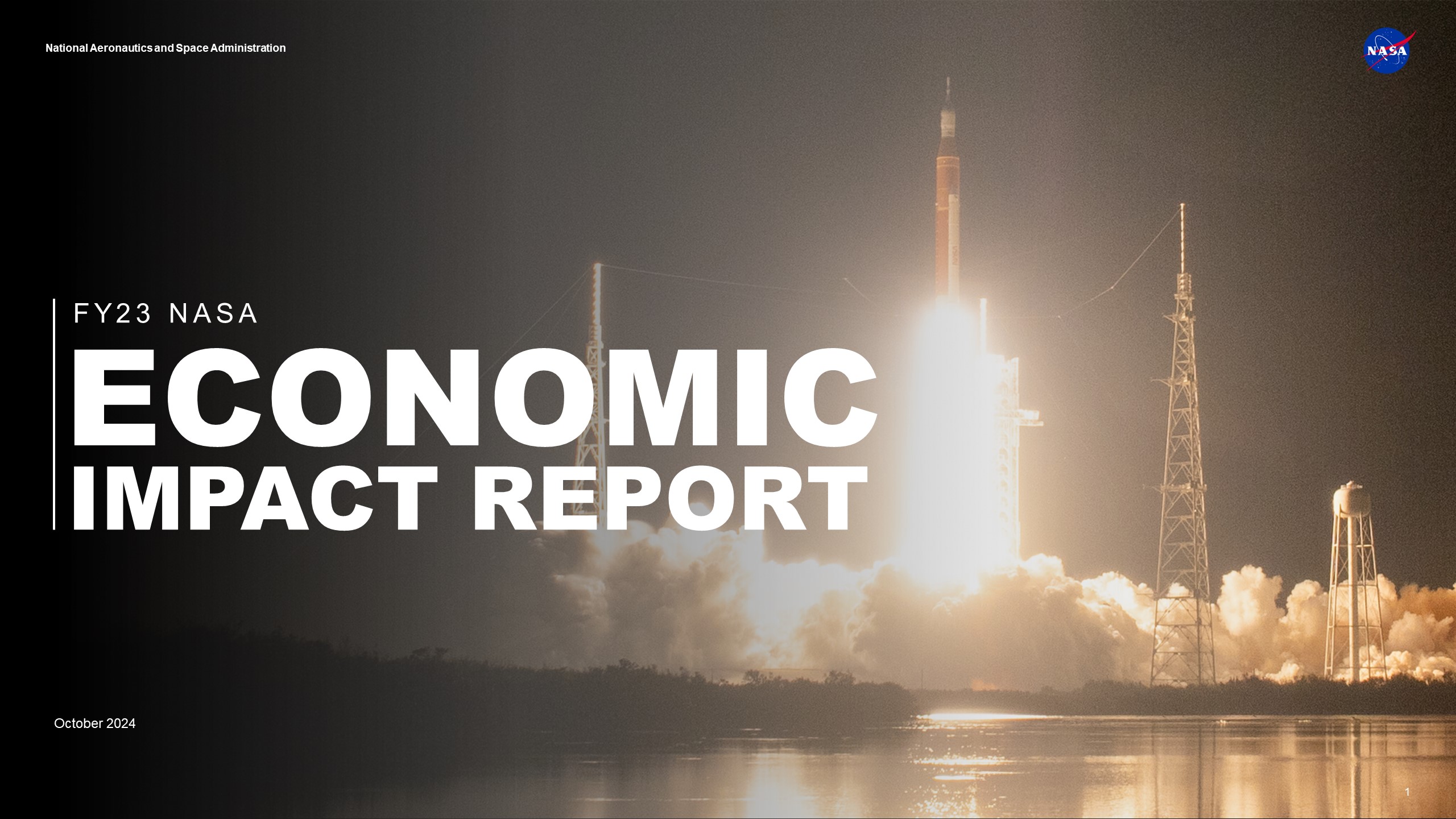NASA’s Economic Impact: A Catalyst for American Growth and Innovation
NASA, known for its groundbreaking space exploration projects, has made significant strides in advancing science and technology, particularly through its Moon to Mars exploration program. This initiative is part of what NASA refers to as the Artemis Generation, a new era of space exploration that aims to make human presence on the Moon sustainable and prepare for the next giant leap—sending astronauts to Mars. Beyond its scientific achievements, NASA’s efforts have been driving substantial economic growth across the United States, as highlighted in their latest economic impact report.
In its third comprehensive economic impact study, NASA revealed that its activities, including those focused on the Moon to Mars missions, climate change research, and technology development, have generated over $75.6 billion in economic output across all 50 states and Washington, D.C., during the fiscal year 2023. This figure underscores the agency’s pivotal role in not only expanding our understanding of the universe but also in fostering economic development and job creation.
According to NASA Administrator Bill Nelson, investing in NASA translates into investing in American workers, innovation, and economic competitiveness. Nelson emphasized that NASA’s work not only fuels economic growth but also inspires future generations and enhances the quality of life. As NASA embarks on the next significant chapter of exploration, its contributions are vital in powering economic strength, fostering scientific progress, and reinforcing American leadership both on Earth and beyond.
Economic Contributions and Job Creation
The report indicates that NASA’s various missions have collectively supported 304,803 jobs nationwide and contributed approximately $9.5 billion in taxes at federal, state, and local levels across the United States. This substantial impact highlights the agency’s role as a key driver of economic activity and employment.
Specifically, the Moon to Mars activities alone generated more than $23.8 billion in total economic output, supporting an estimated 96,479 jobs across the nation. These figures reflect the scale and importance of NASA’s commitment to advancing space exploration and its ripple effect on the economy.
In addition to its space exploration initiatives, NASA’s investments in climate research and technology have also yielded significant economic benefits. These activities produced over $7.9 billion in total economic output and supported approximately 32,900 jobs in the U.S. This aspect of NASA’s work underscores its commitment to addressing global challenges such as climate change, while simultaneously stimulating economic growth.
Broader Economic Impact Across the United States
The economic impact of NASA’s activities extends to every state in the country, with 45 states experiencing more than $10 million in economic benefits. Among these, eight states have seen impacts exceeding $1 billion, illustrating the widespread influence of NASA’s work on regional economies.
The Moon to Mars initiative, which includes the Artemis missions, contributed nearly $2.9 billion in tax revenue, accounting for about 32% of NASA’s overall economic impact. This initiative is pivotal in preparing for future human exploration beyond Earth, and its economic implications are substantial.
NASA’s efforts in climate change research and technology development generated over $1 billion in tax revenue, with approximately 11% of NASA’s total economic impacts attributable to these investments. This highlights the agency’s dual role in scientific advancement and economic contribution.
International Collaborations and Technological Advancements
In fiscal year 2023, NASA maintained over 644 active international agreements for various scientific research and technology development activities. The International Space Station (ISS), a collaborative project involving 15 countries and five space agencies, plays a significant role in NASA’s international partnerships. This global collaboration underscores the importance of international cooperation in advancing space exploration and scientific research.
Domestically, NASA oversaw 2,628 active partnerships, including 629 new domestic and 109 new international agreements. These collaborations involved 587 different non-federal partners across the United States and spanned 47 of the 50 states. Such partnerships are essential in leveraging external expertise and resources, further enhancing NASA’s impact.
NASA Spinoffs: Beyond Economic Metrics
NASA’s influence extends beyond economic metrics through its Spinoff program, which involves public products and processes developed with NASA technology, funding, or expertise. These spinoffs have tangible benefits for American lives, beyond just economic contributions. In fiscal year 2023, NASA’s tech transfer activities resulted in 1,564 new technology reports, 40 new patent applications, 69 patents issued, and the establishment of 5,277 software usage agreements. These technological advancements demonstrate NASA’s role in fostering innovation and contributing to everyday life improvements.
Scientific research and development is the largest single sector benefiting from NASA’s work, accounting for 19% of the agency’s total economic impact. This sector is crucial in driving advancements in science and technology that can improve life on Earth and contribute to humanity’s broader goals.
Conclusion
NASA’s latest economic impact report, conducted by the Nathalie P. Voorhees Center for Neighborhood and Community Improvement at the University of Illinois at Chicago, highlights the agency’s significant contributions to the U.S. economy and beyond. These findings underscore NASA’s role in driving economic growth, supporting job creation, and fostering innovation. As NASA continues its mission of exploration and scientific discovery, its impact on the economy and society remains profound.
For those interested in exploring the full report, it is available for review at the following link: NASA Fiscal Year 2023 Economic Impact Report.
Through its innovative projects and collaborations, NASA continues to be a catalyst for progress, both in space and on Earth. Its work not only inspires the Artemis Generation but also advances America’s leadership in science, technology, and economic growth.
For more Information, Refer to this article.



































